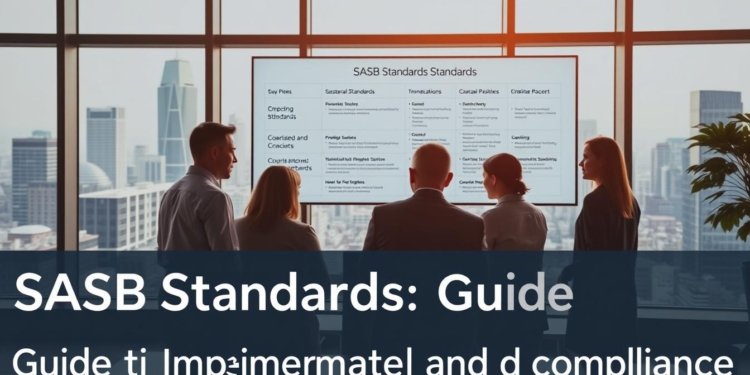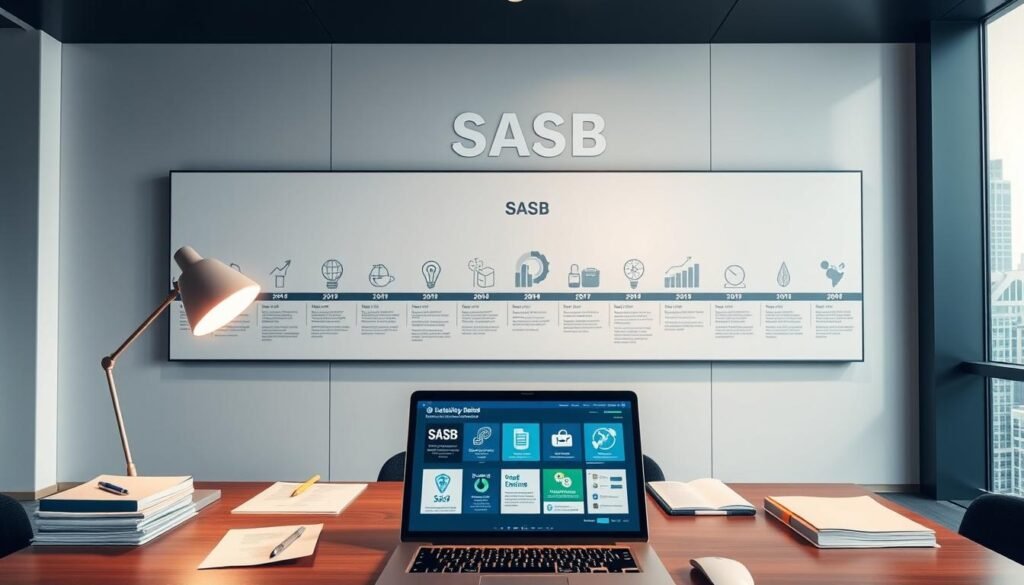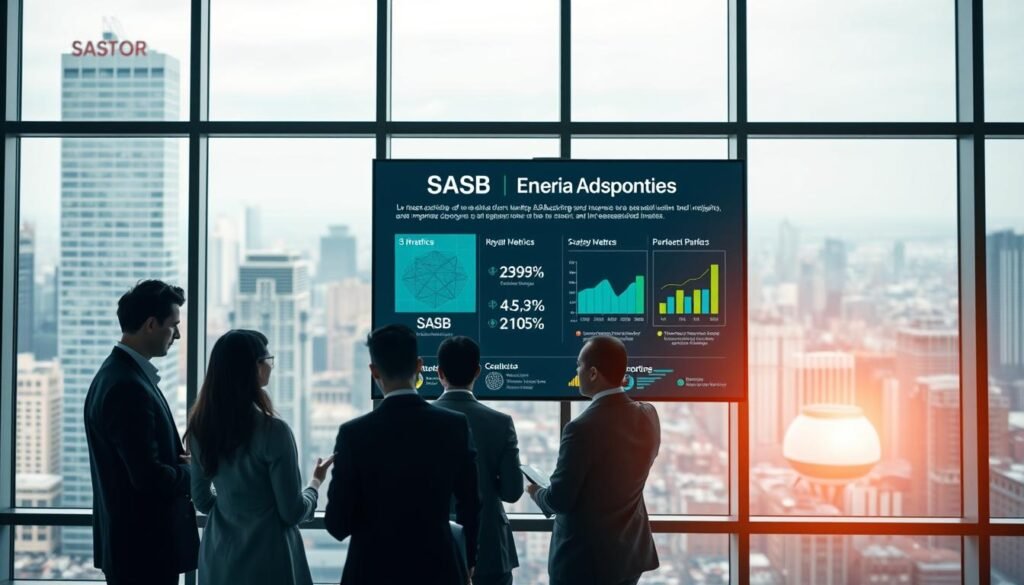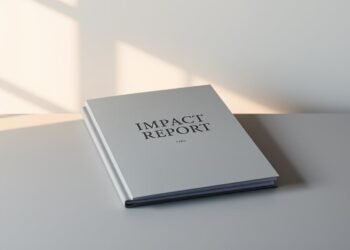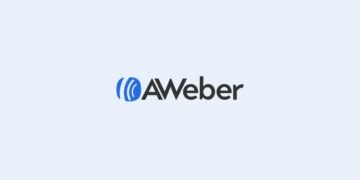What if the secret to long-term business success isn’t just in your financial statements, but in how you measure and report your sustainability efforts?
More companies than ever are discovering this truth. In 2022, over 2,200 organizations across 66 countries adopted SASB reporting. That’s a 60% jump from the previous year.
This framework helps businesses standardize their sustainability disclosures. Investors increasingly demand this consistent, comparable data.
Our guide provides a comprehensive resource for understanding and implementing these standards. You’ll learn how to improve resource allocation and enhance investor communication.
The framework now integrates into the global ISSB structure. It covers five key sustainability dimensions with industry-specific metrics for 77 sectors.
While reporting remains voluntary, market pressures make adoption increasingly important. This creates consistent data that supports long-term value creation.
Key Takeaways
- SASB Standards provide a standardized framework for sustainability reporting
- Adoption grew 60% in 2022 with over 2,200 companies participating
- The standards help improve investor communication and resource allocation
- They cover five sustainability dimensions across 77 industries
- Integration with ISSB creates global reporting consistency
- Industry-specific metrics address material sustainability factors
- Voluntary adoption is growing due to investor demand
Introduction to SASB Standards
Many organizations struggle with where to begin their sustainability journey. The framework provides clear starting points for meaningful disclosure.
What Are SASB Standards?
These industry-specific guidelines help businesses disclose sustainability information that matters to investors. They focus on factors that affect financial performance and company value.
Dr. Jean Rogers founded the organization in 2011. She saw a gap between traditional financial statements and emerging sustainability factors.
The framework identifies specific disclosure topics for 77 industries. Each topic includes quantitative metrics for consistent reporting.
Purpose and Scope of Sustainability Accounting
This approach concentrates on issues that impact cash flows and capital costs. It addresses risks and opportunities that affect long-term value creation.
The standards provide consistent, comparable data for investment decisions. This investor-focused approach meets the needs of financial stakeholders specifically.
Integration into the ISSB in 2022 enhanced global relevance. The framework now aligns with international reporting expectations.
It uses existing metrics from organizations like WHO and EPA. This reduces redundancy and implementation costs for companies.
Materiality ensures that reported information helps investors make decisions. The growing adoption includes support from 258 institutional investors across 23 countries.
History and Evolution of SASB
The journey of modern sustainability reporting began with a simple question: How can businesses better communicate their environmental and social impact to investors? This question sparked a movement that would transform corporate disclosure practices worldwide.
Founding and Early Development
Dr. Jean Rogers launched the Sustainability Accounting Standards Board in 2011. Her background as an environmental engineer gave her unique insight into measurement challenges.
Initial research at Harvard’s Initiative for Responsible Investment identified critical gaps. Traditional financial statements missed important sustainability factors affecting company value.
The early framework focused initially on U.S. companies. It quickly gained traction as investors recognized its value for decision-making.
By 2021, support grew dramatically. Some 258 institutional investors across 23 countries were using the framework.
Transition to ISSB and Global Integration
2021 marked a significant turning point. The organization merged with the International Integrated Reporting Council.
This created the Value Reporting Foundation. The move responded directly to investor demands for simplified reporting approaches.
Consolidation into the IFRS Foundation followed in 2022. The International Sustainability Standards Board now maintains and enhances these guidelines.
This transition transformed a U.S.-centric framework into a global baseline for sustainability disclosure. The ISSB addresses US-specific references while continuing enhancement projects.
Global adoption patterns shifted noticeably. Nearly 60% of reporters were located outside the United States by 2022.
The framework now serves as a foundational element within IFRS Sustainability Disclosure Standards. This ensures ongoing relevance and international recognition for reporting companies.
Current Status: SASB Standards in the ISSB Era
Global sustainability reporting has entered a new phase of international cooperation. The integration into the IFRS Foundation marks a significant milestone for corporate disclosure practices.
This evolution creates a unified approach to environmental and social reporting. Companies now operate within a coordinated global system.
IFRS Foundation Integration
The framework now serves as a core component of international sustainability reporting. It provides the foundational structure for ISSB requirements.
IFRS S1 and S2 directly incorporate industry-specific guidance. Organizations must reference these materials when identifying relevant risks and opportunities.
This integration ensures consistent, comparable data across global markets. Companies familiar with the approach gain immediate advantages in implementation.
The ISSB continues enhancement projects to maintain relevance. Updates include removing U.S.-specific references for broader international application.
Global Adoption Trends and Statistics
Adoption rates demonstrate remarkable growth across international markets. In 2022, 2,231 companies from 66 jurisdictions reported using these guidelines.
This represents a 60% increase from the previous year. The expansion shows no signs of slowing.
Nearly 60% of reporting organizations now operate outside the United States. Many regions experienced over 50% year-on-year growth.
European companies increasingly use the framework alongside CSRD requirements. It provides industry-specific insights while EU standards develop.
The strategic importance of this approach continues to grow. It serves as a practical bridge to comprehensive global reporting standards.
Investors worldwide benefit from consistent, comparable sustainability information. This alignment supports better capital allocation decisions.
Implementing SASB Standards: A Step-by-Step Process
A systematic approach transforms complex sustainability reporting into manageable, actionable steps for any organization. This methodology ensures companies can effectively communicate their environmental and social performance to investors.
The seven-step process creates a clear path from initial assessment to ongoing improvement. Each phase builds upon the previous one, creating a comprehensive framework for disclosure.
Establishing a Foundation for Sustainability Reporting
Step one involves integrating sustainability into your company’s core strategy. This means aligning environmental and social factors with business objectives.
Leadership commitment is essential for successful implementation. Executives must champion sustainability as a business priority, not just a compliance exercise.
Cultural alignment ensures everyone understands their role. Employees at all levels should recognize how sustainability contributes to long-term value creation.
Conducting Gap Analysis and Readiness Assessment
Step five focuses on identifying current capabilities and improvement areas. Companies should assess existing data collection processes and internal controls.
The Materiality Finder tool helps identify relevant topics for your specific industry. This ensures you focus on issues that truly matter to investors and stakeholders.
Gap analysis reveals where additional resources or processes may be needed. It highlights both strengths and opportunities for enhancement in your current approach.
Developing and Publishing Disclosures
Step six involves creating meaningful sustainability information for investors. Companies should present both quantitative metrics and contextual narrative.
Effective disclosures tell a compelling story about value creation. They connect environmental and social performance to financial outcomes and business strategy.
Companies can choose various disclosure channels based on audience needs. Options include annual reports, dedicated sustainability documents, or investor presentations.
Continuous improvement ensures reporting remains relevant over time. Regular feedback loops and monitoring of evolving regulations maintain disclosure quality.
SASB Materiality Concepts and Tools
How do companies determine which sustainability issues truly matter to their financial performance and investor decisions? Materiality concepts provide the answer, helping organizations focus on what’s genuinely important rather than trying to report everything.
Understanding Financial Materiality in Sustainability
Financial materiality is an accounting principle where information is considered material if it would influence an investor’s decision. This concept separates essential data from nice-to-know information.
The framework applies this principle by identifying sustainability topics that are financially material for specific industries. It focuses on factors that directly impact cash flows, capital costs, and long-term value creation.
This approach ensures companies disclose information that truly matters to investors. It prevents overwhelming stakeholders with irrelevant data while highlighting critical performance indicators.
Using the SASB Materiality Finder
The Materiality Finder is a free online tool that helps companies identify relevant sustainability topics. Users can search by company name or compare different industries to find material issues.
Investors use this tool to assess portfolio risks and opportunities. Companies leverage it to pinpoint which issues require reporting and resource allocation.
For example, food and beverage companies face material issues around water management and nutritional content. Software companies focus more on data privacy and energy management.
This tool standardizes benchmarking across industries. It enhances disclosure relevance by focusing on what actually affects financial performance.
The Five Sustainability Dimensions
The framework organizes disclosure topics into five comprehensive dimensions. These categories help structure sustainability information logically.
Environment covers issues like climate change, water management, and biodiversity. Human Capital addresses employee health, safety, and diversity.
Social Capital includes community relations and customer privacy. Business Model & Innovation focuses on product lifecycle management.
Leadership & Governance examines business ethics and oversight. These dimensions encompass 26 general issue categories mapped across 77 industries.
Materiality assessments help identify ESG issues that can reshape business operations. As industry leaders emphasize, this focus drives meaningful change rather than just compliance.
The framework’s tools provide standardized approaches to benchmarking. They help companies communicate their sustainability journey effectively to investors.
Benefits of SASB Reporting for Companies and Investors
Organizations and financial stakeholders both gain significant advantages from implementing structured sustainability disclosure practices. These benefits extend beyond compliance to create real business value and better investment outcomes.
Value Creation for Businesses
Companies using this approach identify material ESG topics more effectively. This promotes efficient resource allocation and strategic focus on sustainability efforts.
Enhanced transparency leads to better access to finance and lower capital costs. Investor confidence grows when companies demonstrate clear sustainability performance.
Addressing sustainability risks and opportunities directly impacts financial outcomes. This supports long-term enterprise value creation and competitive advantage.
The framework helps organizations already familiar with these practices transition smoothly to IFRS Sustainability Disclosure Standards. This alignment creates implementation efficiencies.
Investment Decision-Making Advantages
Investors receive consistent, comparable data on financially material issues. This enables informed decisions across geographies and asset classes.
Sustainability information provides views beyond traditional financial statements. Investors can assess sector-specific exposures and emerging risks.
A McKinsey survey shows 85% of chief investment officers consider ESG important in their decision-making. This demonstrates growing investor demand for quality sustainability data.
In 2021, 258 investors representing $76 trillion in assets used these reporting guidelines. This substantial adoption reflects the framework’s value for risk management.
Climate change and other sustainability factors become measurable investment considerations. As industry experts note, these issues define long-term business prospects.
Both companies and investors benefit from this mutually reinforcing relationship. Organizations gain competitive advantage while investors obtain reliable data for comprehensive analysis.
SASB in the Broader ESG Reporting Landscape
Understanding how different sustainability frameworks work together helps companies create more effective reporting strategies. Each approach serves distinct purposes while contributing to comprehensive environmental, social and governance disclosure.
Comparison with Other Frameworks
The investor-focused approach differs significantly from other major reporting systems. Global Reporting Initiative standards address broader stakeholder concerns beyond financial materiality.
GRI emphasizes an organization’s impacts on the economy, environment and people. The Corporate Sustainability Reporting Directive creates mandatory requirements for EU companies.
This framework provides industry-specific metrics that directly connect to financial performance. This contrasts with GRI’s universal standards and CSRD’s regulatory compliance focus.
Investors particularly value the financially material sustainability information. Other frameworks serve wider audiences including communities, regulators and civil society.
Complementary Reporting Approaches
Many organizations use multiple frameworks to address different stakeholder needs. Companies might use this investor-focused system alongside GRI’s impact reporting.
The integration into ISSB standards creates a global baseline for sustainability disclosure. This consolidation reduces fragmentation in the reporting landscape.
European companies often use both CSRD requirements and industry-specific guidance. This combination provides regulatory compliance while addressing investor information needs.
Understanding these complementary approaches helps companies select the right tools for their reporting needs. Organizations can focus resources on the most relevant sustainability issues for their context.
Industry experts recommend using this framework for core investor communications. Additional frameworks can address broader stakeholder concerns when necessary.
This integrated approach creates comprehensive sustainability reporting that serves multiple audiences. It balances investor needs with wider societal expectations.
Conclusion
Adopting industry-specific sustainability reporting creates lasting competitive advantages. The framework provides clear metrics that matter to financial performance.
Companies gain better risk management and investor confidence. The Materiality Finder helps identify relevant topics for your industry.
Early adopters benefit from streamlined implementation and global recognition. This approach complements other reporting frameworks while focusing on financially material issues.
Begin your sustainability journey today. Use available tools and expert resources to enhance transparency and long-term value creation.
FAQ
What are SASB Standards?
SASB Standards are a set of industry-specific guidelines that help companies disclose financially material sustainability information. They focus on environmental, social, and governance factors that are most likely to impact financial performance or valuation within a particular sector.
How do SASB Standards differ from other reporting frameworks like GRI?
While GRI emphasizes broader stakeholder impact, SASB concentrates on sustainability issues that are financially material to investors. Many organizations use both frameworks to provide a complete picture of their sustainability performance.
Are SASB Standards mandatory?
SASB Standards are currently voluntary, but regulatory bodies and investors increasingly expect their use. The IFRS Foundation now oversees these standards, signaling growing global recognition and potential future regulatory inclusion.
How can companies identify which SASB Standards apply to them?
Companies can use the SASB Materiality Finder tool, which matches business activities with relevant industry standards. This helps identify the most significant sustainability risks and opportunities for disclosure.
What are the benefits of implementing SASB Standards?
Implementation helps companies improve risk management, enhance investor confidence, and potentially reduce capital costs. It provides a structured way to communicate performance on issues that matter most to financial outcomes.
How do SASB Standards integrate with the ISSB framework?
The International Sustainability Standards Board has incorporated SASB’s industry-specific approach into its global baseline standards. This integration allows companies to use SASB metrics while complying with international reporting requirements.
What industries do SASB Standards cover?
The standards cover 77 industries across 11 sectors, including healthcare, technology, transportation, and energy. Each industry has tailored metrics addressing its most relevant sustainability factors.

